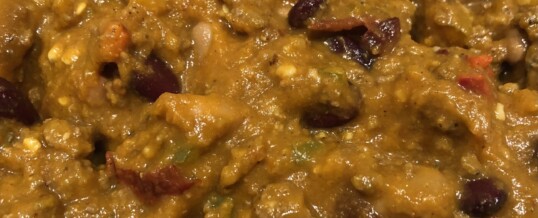
“Oh, waiter. There’s a bean in my chili.”
So goes the encounter every Southerner dreads when he orders a bowl of red, and is served chili with beans.
There are certain missteps in the South that are unforgivable. Asking a girl out without clearing it first with her daddy is a no-no. Bringing a guest a glass of tea without sugar in it is a big no-no.
But serving chili with beans is a no-no on the level of giving someone ketchup when they ask for BBQ sauce.
Growing up in Ashdown, Arkansas, we may not have had much, but we had sense enough to reserve beans for their own bowl, lined with a big chunk of cornbread and a couple of slices of white onion. Beans are fine, just not in chili.
Why? Because history tells us so.
People may disagree about whether beans (or other vegetables) belong in chili, but there is a pretty solid consensus that chili is American, with a heavy Mexican influence. And chili is a big deal, not just in Texas, but also everywhere in the US.
The roots of chili go back to the 1800s. The ingredients, beef, fat, chilis, and spices, were easy and portable. This made it easy to take chili with you in a brick that could be reconstituted on a cattle drive, wagon train, or anywhere else for that matter.
The biggest consideration for making chili a culinary focal point was cost. It was cheap to make.
But one thing remained constant and clear: No beans in the chili.
Former President Lyndon B. Johnson knew good chili. He knew Texas chili. He had a favorite recipe that used a leaner cut of beef (likely because he had a problem with his ticker and his doctor told him to eat less fat). He talked often about wanting to get home to Texas to a “bowl of red.”
His talk of chili (with no beans) got so much attention that his wife, Lady Bird Johnson, had cards made with the chili recipe so that when the White House was asked about it, they could be sent instructions on how to make it.
But accurate directions on making chili haven’t stopped those who aren’t from the South from trying to do it their own way. They still think it’s OK to put pintos, kidney, or some other legume in your chili.
Southerners have heard the argument that adding beans to chili stretches the food so that it lasts longer. For a family who’s trying to make ends meet, that may seem like a valid argument. But, no beuno. We aren’t buying it. Give your kid extra crackers or a chunk of cheese if you need to stretch things.
And the arrogance of those who think they can get around the rule is pretty staggering.
To try and head the chili imposters off at the pass, in 1977, the State of Texas declared chili as the “state food.” It did so, “in recognition of the fact that the only real ‘bowl of red’ is that prepared by Texans.”
But just a few years later in 1993, a bunch of yahoos in the State of Illinois tried to declare that Illinois was the, “Chilli Capital of the Civilized World.”
Bless their hearts.
First, there ain’t much civilized about Illinois chili (it has beans in it), and you don’t spell chili with to L’s. We’re going to give them a pass on this because they also don’t put sugar in their tea or ask a girl’s daddy for permission to take her out for chili with no beans and one L.
The original name of chili is, “chili con carne,” which means, “chili with meat.” They didn’t name it, “chili con frijoles.”
So, when the cooler weather hits, and you have the urge to make a big bowl of red, please, for the love of all that’s holy, make it the right way.
Show the world that you do know beans about chili.
©2022 John Moore
John’s latest book, Puns for Groan People, and his books, Write of Passage: A Southerner’s View of Then and Now Vol. 1 and Vol. 2, are available on his website – TheCountryWriter.com, where you can also send him a message and hear his weekly podcast.
NOV
2022
